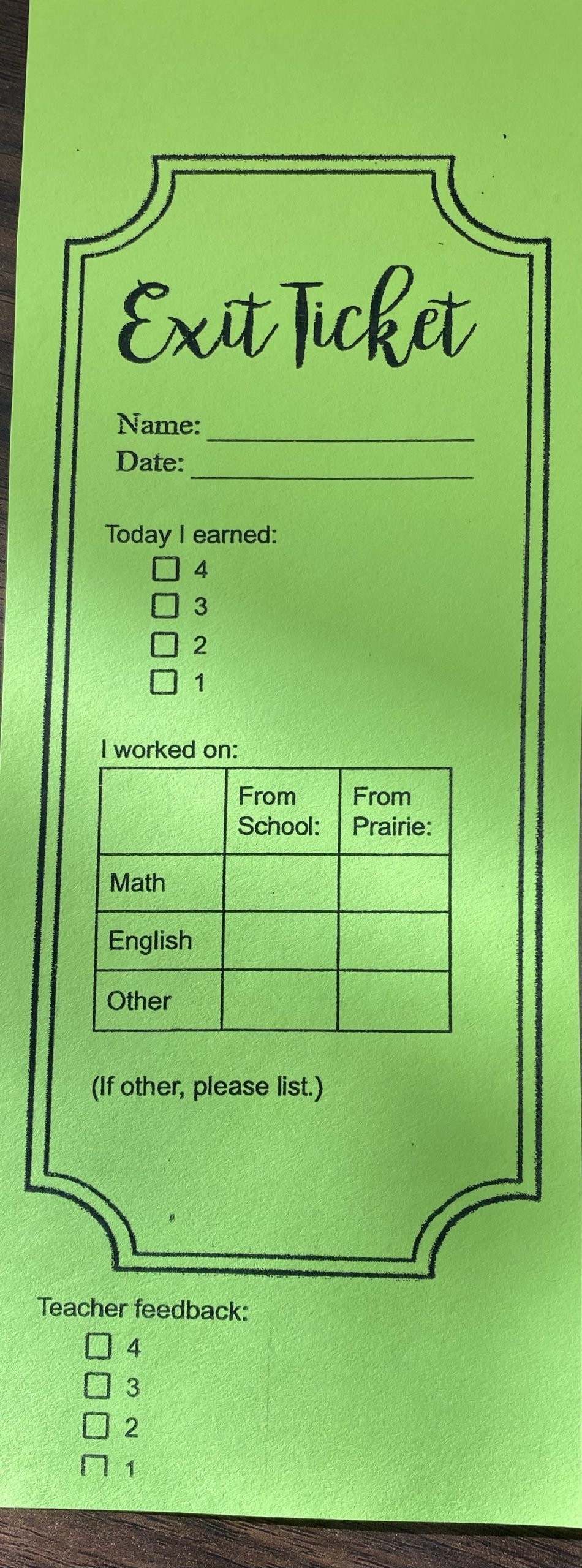It’s common knowledge that good classroom management includes routines students are familiar with. When I started my new job this school year, I knew I would be moving students around in different groups, so I needed to run each group throughout the day in the same way. Therefore, I needed routines that would work well with students from kindergarten through twelfth grade and with a variety of educational and emotional needs.
I decided to end each class with students completing an exit ticket. Most of the time, teachers use these to assess what students have learned or what questions they still have at the end of a class period. Since my day is structured into what is pretty much four sections of “resource room,” (each student working on something different than the student next to them) that wasn’t going to work in my setting. I wanted to make something that would ask students to reflect on their choices and behaviors during their hour of school each day. I also wanted useful information for myself and useful feedback for my learners. After many iterations, I came up with what we are currently using. I got the border and “exit ticket” words from a free file on Teachers Pay Teachers. Then I made the rest in Google docs, cut out the pieces, taped them on (because I’m super tech savvy-haha), and made copies; I get three tickets out of one piece of printer paper.

Students write their name and the date, then check off where they feel they fell on our four-point behavior scale (I’ll share this next time!). Next, they check off what they worked on. I added this for two reasons. Sometimes if I don’t get to my “charting” until the end of the day, I forget that Tommy worked on math while I was helping Sally with social studies. I also like to see if what they checked off matches up with what I observed. For example, if it looked like Mary was watching a video on the Pythagorean Theorem but checks off that she worked on English, I make a note to check on that with the student the next time I see them. After students turn these in, I check off what behavior scale number I observed them to be; then I leave a little note, a sticker, etc. I record both my score and the student’s score in my daily charting (I’ll share this tip in another post).
This has given me extremely useful data. Is a student rating themselves very high or very low and that’s different from what I’m observing? Is a student having an exceptionally bad day? In many cases, students have written notes to me on the exit ticket about how they are feeling, that they need additional help, that they don’t feel safe, that they are sorry they didn’t do a lot of work that day for xyz reasons. Because they know I read these every day, they know what they write on them will be seen and taken seriously; they will be heard.
Do you use exit tickets in your classroom? What has worked well (or not so well)? If you don’t currently use them, consider giving them a try. What information would be most useful for you to get from your students? What feedback would be most beneficial to them? Use these as your guiding questions and you will end up with the exit ticket that is right for you!
